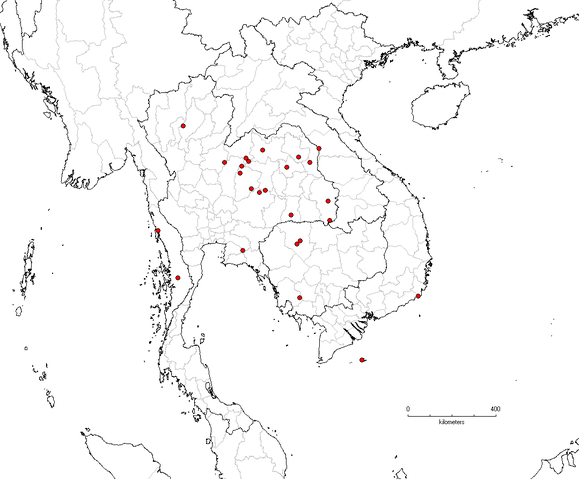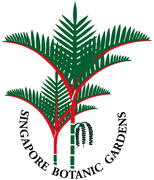Argyreia lanceolata
Nomenclature
Accepted name/Authority/Place of publication:
Argyreia lanceolata Choisy, Mém. Soc. Phys. Genève 6: 421. 1834.
Synonyms:
Lettsomia lanceolata (Choisy) Kerr, Fl. Siam. 3(2): 33. 1954.
Description
Habit:
Slender trailer from woody tap root, all parts whitish or silvery hairy; stems herbaceous, wiry, to 5 m long.
Leaves:
Leaves lanceolate or elliptic-oblong, 6–17 by 2–7 cm, apex obtuse, mucronate, base tapering cuneate or obtuse, chartaceous, upper side glabrous, underside appressed silvery hairy; lateral veins 4 or 5 on each side; petiole slender, 0.5–2 cm long.
Inflorescences:
Inflorescences axillary cymes, 1–3(–9)-flowered; peduncles 0.2–0.8 mm long; pedicels slender, 6–10 mm long; bracts lanceolate-acuminate, up to 1.2 cm long, densely sericeous, caducous.
Flowers:
Flower sepals unequal, oblong or lanceolate, apex acuminate, outside shaggy sericeous, inside glabrous, 3 outer sepals 12–19 by 4–5 mm, 2 inner sepals broader; corolla flaring funnelform, 5–6.3 cm long, limb entire to 5-pointed, red-purple, tube whitish purple, glabrous inside, midpetaline bands and upper tube whitish strigose-sericeous outside; stamens included, unequal, 26–34 mm long, filaments basally dilated and hairy; pistil included, 36–40 mm long, disk shallowly 5-lobed; ovary glabrous, 2-celled, jointed at style base.
Fruits:
Berry c. 7–8 mm diam., subglobose.
Seeds:
Seeds 3–4.5 mm long, glabrous.
References:
Staples, G. & P. Traiperm. 2010. Argyreia in Convolvulaceae. Fl. Thailand 10(3): 337–371.
Biogeography, Ecology and Natural History
Distribution Map:

Distribution:
India, Myanmar (type), Thailand, Cambodia, Laos, Vietnam.
Ecology:
Sunny clearings and savannah patches in deciduous dipterocarp forest,
dipterocarp-pine forest, deciduous dipterocarp-oak scrub forest, and pine
forest on silt, sandy soil, and shale bedrock; altitude: 120–800 m.
Phenology:
Flowering: June–November; fruiting: November.
References:
Staples, G. & P. Traiperm. 2010. Argyreia in Convolvulaceae. Fl. Thailand 10(3): 337–371.
Other information
Common names and uses:
Thao kradueng chang (Thai).
Authorship for webpage
Editor:
George Staples, Esmond Er
Contributors:


One of the most beautiful of the forest understorey species, A. lanceolata has large flowers of a striking colour and handsome silvery foliage. The tough woody tap root and wiry herbaceous stems suggest a plant adapted for seasonal drought or regular episodes of burning during which it dies back to the caudex and then resprouts when more favorable conditions return.